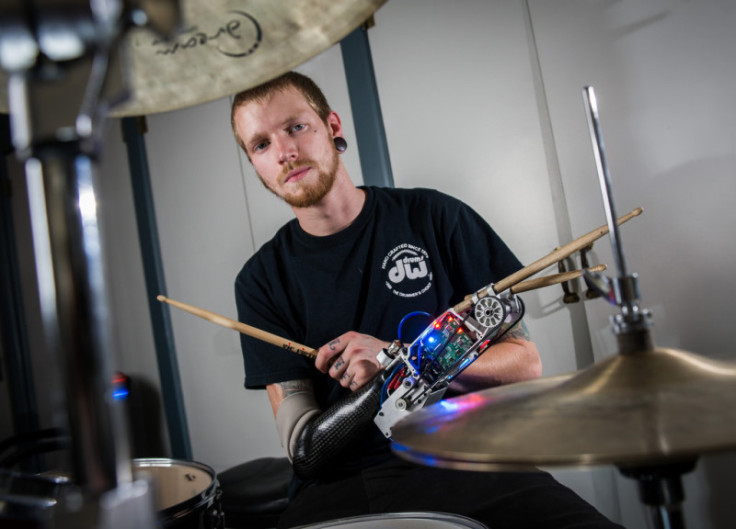Amputee Drummer Jason Barnes Now Three-Armed Cyborg: A Lot of Metal Drummers Might Be Jealous

A drummer says he is now the envy of his fellow musicians after becoming a three-armed cyborg.
Jason Barnes, a drummer, lost his right arm below the elbow two years ago after getting electrocuted.
He made his own prosthetic device after the accident but it was not very flexible. He could play the drums by moving his elbow up and down, but was unable to control the speed or bounce of the stick as he had no fingers or wrist.
To help him, Professor Gil Weinberg from the Georgia Tech Centre for Music Technology in Atlanta, created a robotic drumming prosthesis that has motors and powers two drumsticks.
The first is controlled by the musician's arms and electronically through muscle sensors. The other "listens" to the music and improvises.
"The second drumstick has a mind of its own," Weinberg said. "The drummer essentially becomes a cyborg. It's interesting to see him playing and improvising with part of his arm that he doesn't totally control."

Speaking about what the device is like to play with, Barnes said: "Now I can flex and send signals to a computer that tightens or loosens the stick and controls the rebound."
An embedded chip prosthetic controls the speed, meaning it can be programmed to play the two sticks at a different rhythm and can move faster than humanly possible.
"I'll bet a lot of metal drummers might be jealous of what I can do now," Barnes said. "Speed is good. Faster is always better."
Weinberg has previously built prosthetics for a percussionist and a marimba player, but said this is the first time one of his creations has had a "musical brain".
"Jason can pull the robotic stick away from the drum when he wants to be fully in control. Or he can allow it to play on its own and be surprised and inspired by his own arm responding to his drumming."
Weinberg is now looking to expand the technology, noting that robotic synchronisation technology could be used by fully-able humans to control a mechanical third arm during operations, such as for astronauts and surgeons.
"If we are able to use machine learning from Jason's muscles (and in future steps, from his brain activity) to determine when he intends to drum and have the stick hit at that moment, both arms can be synchronised," he said.
© Copyright IBTimes 2024. All rights reserved.






